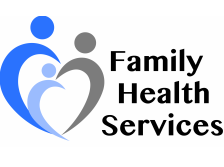Diabetes News – April 2021
APRIL IS NATIONAL STRESS AWARENESS MONTH
And who isn’t a little bit stressed right now?
Diabetes management is a lifelong process. This can add stress to your daily life. Stress can be a major barrier to effective glucose control. Stress hormones in your body may directly affect glucose levels. If you’re experiencing stress or feeling threatened, your body reacts. This is called the fight-or-flight response. This response elevates your hormone levels and causes your nerve cells to fire.
During this response, your body releases adrenaline and cortisol into your bloodstream and your respiratory rates increase. Your body directs blood to the muscles and limbs, allowing you to fight the situation. Your body may not be able to process the glucose released by your firing nerve cells if you have diabetes. If you can’t convert the glucose into energy, it builds up in the bloodstream. This causes your blood glucose levels to rise.
Constant stress from long-term problems with blood glucose can also wear you down mentally and physically. This may make managing your diabetes difficult. There are many healthy ways to decrease your stress.
If you’re feeling stressed about your condition, know that you aren’t alone. You can connect with people online or in your community for solidarity and support.
Online support groups
You can often find online support groups that offers helpful tips and a strong community to help you cope. Diabetic Connect is an online resource dedicated to improving your quality of life. It provides articles, recipes, and informative videos.
In-person support groups
For women with diabetes, Diabetes Sisters offers nationwide meetups. The group started in North Carolina and expanded due to popularity. They now offer in-person groups throughout the country. These informal meetings are held on weeknights and typically last for one or two hours.
Defeat Diabetes Foundation provides a listing of peer support groups in all 50 states and the District of Columbia. You even search the directory and submit a listing of your own. The American Diabetes Association also offers local offices focused on education and community outreach.
Therapy
You may feel more comfortable talking with a professional about your stress. A therapist can provide coping mechanisms tailored to your individual situation and give you a safe environment to talk. They may also provide medical advice that online or in-person support groups can’t offer. We offer in-house, quality behavioral health treatment at FHS. If you would like to make an appointment, call 419-502-2803, or fill out our new patient form today.
Purdie, Jennifer. Medically reviewed by Debra Sullivan, PhD, MSN, RN, CNE, COI on April 29, 2016”Stress: How it Affects Diabetes and How to Decrease it”
https://www.healthline.com/health/diabetes-and-stress. Accessed 03/20/2020
When we are stressed, it is easy to turn to foods. The good news is not all foods need to be bad for you to find comfort in them. Try this cheesy bowl of yummies to lift your mood, not your blood sugars.
Pork Paprikash with Cauliflower “Rice”
Ingredients:
- 1 (1 pound) natural pork tenderloin
- 6 cups chopped cauliflower (1 1/2 pounds)
- 2 tablespoons olive oil, divided
- ⅛ teaspoon salt plus 1/4 teaspoon, divided
- 1 medium onion, cut into thin wedges
- 1 ½ tablespoons paprika plus more for optional garnish
- ½ teaspoon ground pepper
- 1 (14.5 ounce) can no-salt-added diced tomatoes with basil, garlic, and oregano, undrained
- 1 cup reduced-sodium chicken broth
- ¼ cup bottled mild banana peppers, finely chopped
- ⅓ cup light sour cream (Optional)
- 2 tablespoons all-purpose flour
- 8 teaspoons light sour cream (Optional)
Directions
- Step 1
Trim fat from meat. Cut meat into bite-size pieces; set aside.
- Step 2
Place cauliflower in a food processor. Cover and process with several on/off pulses until cauliflower is evenly chopped into rice-size pieces.
- Step 3
Heat 1 tablespoon of the oil in a very large nonstick skillet over medium-high heat. Add cauliflower and 1/8 teaspoon of the salt. Cook 8 to 10 minutes or until golden brown flecks appear throughout, stirring occasionally.
- Step 4
Meanwhile, heat the remaining 1 tablespoon oil in a large skillet over medium-high heat. Add meat and onion; cook about 3 minutes or until meat is starting to brown, stirring occasionally. Sprinkle with 1 1/2 tablespoons paprika, ground pepper, and remaining 1/4 teaspoon salt. Cook and stir 1 minute more.
- Step 5
Add tomatoes, broth, and banana peppers. Bring to boiling; reduce heat to medium-low. Cook, covered, 5 minutes. Increase heat to medium-high. Cook, uncovered, 4 to 6 minutes or until slightly thickened, stirring frequently. Stir together 1/3 cup sour cream and flour in a small bowl; stir into meat mixture. Cook and stir until thickened and bubbly.
- Step 6
Serve meat mixture over cauliflower “rice.” If desired, top each serving with 2 teaspoons sour cream and a sprinkle of paprika.
Nutrition Facts
Serving Size: 1 1/4 Cups Meat Mixture And 1 Cup Cauliflower “Rice”
Per Serving:
319 calories; protein 30.6g; carbohydrates 23.8g; dietary fiber 10.9g; sugars 10.7g; fat 11.6g; saturated fat 2.9g; cholesterol 79.2mg; vitamin a iu 1300.3IU; vitamin c 78.8mg; folate 106.8mcg; calcium 76.8mg; iron 2.8mg; magnesium 63mg; potassium 1180.2mg; sodium 593.2mg.
Exchanges: 3 1/2 Vegetable, 3 Lean Protein, 1 1/2 Fat, 1/2 Starch
Source: eatingwell.com
Community offerings: *
* Many community offerings have been postponed, changed, or canceled because of the coronavirus/COVID 19. Please call the number listed for the event to verify availability, dates, and times.
If you have questions regarding Coronavirus/COVID-19 please call 1-833-4-ASK-ODH (1-833-427-5634)
Or, go to https://www.cdc.gov/coronavirus/2019-nCoV/index.html or https://coronavirus.ohio.gov/wps/portal/gov/covid-19/.
Diabetes Empowerment Education Program (DEEP) –Erie County Senior Center
COST: Free
CONTACT: Tina Elmlinger 419-624-1856
The Diabetes Empowerment Education Program [DEEP] is offered every Wednesday for six weeks. Good attendance is important. This free program is for diabetics, pre-diabetics, and spouses or caregivers of a diabetic. Residents of Erie County, aged 60 or older, please call 419-624-1856 to register.
Diabetes Support Group – Firelands Regional Medical Center
The Diabetes Support Group presented by Jean Feick CNP,CDE, meets the third Wednesday of each month Sept–November and January-May from 12:00pm –1:00pm. This meeting is free to the public and no registration is required. Attendees are welcome to purchase lunch in the hospital cafeteria and come to the adjacent Cafeteria Meeting #1. A different topic will be reviewed each month. If you have questions, please contact the Diabetes Education Department at 419-557-6992.
HEALTH & WELLNESS SCREENING – offered by Firelands Regional Medical Center
You must Pre-register for all Lab Work at 419-557-7840.
Firelands Regional Medical Center South Campus
1912 Hayes Avenue Sandusky, OH
Saturday, May 15
7:00 am -9:30 am
Firelands Regional Medical Center South Campus
1912 Hayes Avenue Sandusky, OH
Saturday, June 12
7:00 am -9:30 am
Health & Wellness Screenings include:
- Complete Blood Count with Metabolic & Lipid Panel (No Eating or Drinking for 12 Hours – Water Allowed – includes liver and kidney function studies, fasting blood sugar, thyroid, cholesterol, HDL/LDL and triglyceride levels along with a complete blood count.) – $45;
- Hemoglobin A1C (A three month report card on how well your blood sugars have been running. A test used to diagnose diabetes and/or to evaluate how well your treatment plan is working.) – $25;
- PSA (Prostate Specific Antigen)- $30;
- Vitamin D – $35;
- TSH – $25
Diet and exercise are an essential part of diabetes management, so is routine testing.
The A1C test—also known as the hemoglobin A1C or HbA1c test—is a simple blood test that measures your average blood sugar levels over the past 3 months. It’s one of the commonly used tests to diagnose prediabetes and diabetes, and is also the main test to help you and your health care team manage your diabetes. Higher A1C levels are linked to diabetes complications, so reaching and maintaining your individual A1C goal is important if you have diabetes.
Last quarter, 70% of our diabetic patients had an A1C of less than 9%. Talk with your provider to discuss the right options for you.



